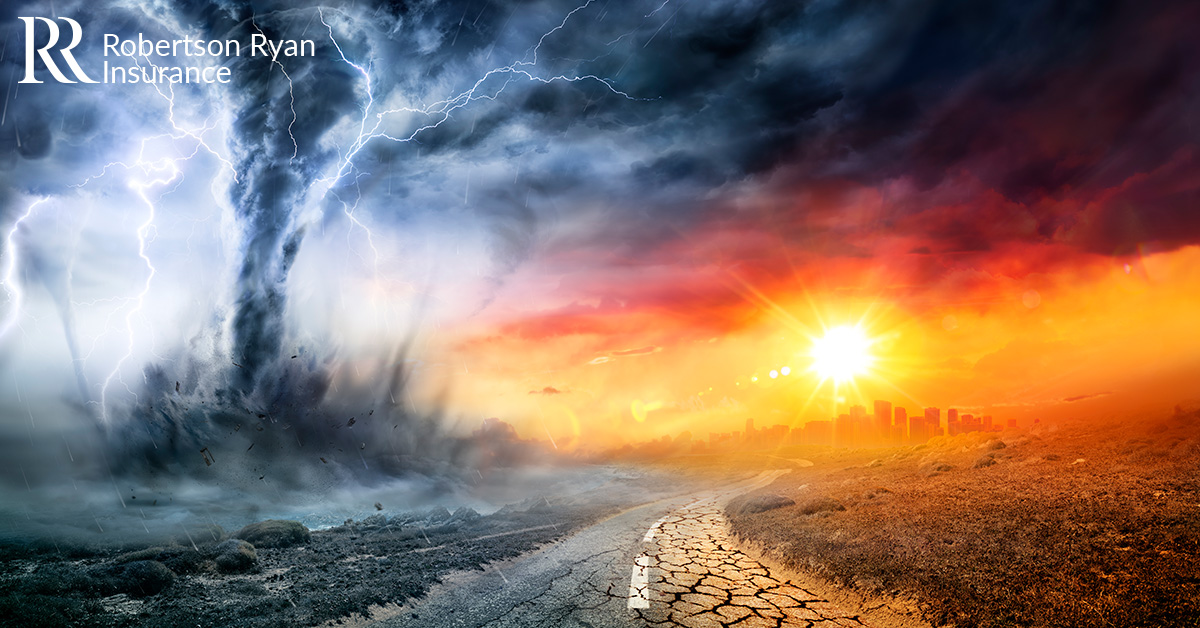What NOAA’s Disaster Database Shutdown Means for Insurance & Insureds
June 24, 2025

The Rising Cost of Weather Disasters
Extreme weather is not just a climate concern, it’s a financial one. In 2024 alone, storms, wildfires, and droughts caused more than $182 billion in damage across the United States. For decades, the National Oceanic and Atmospheric Administration (NOAA) tracked these billion-dollar events through a public database that became a vital tool for insurers, reinsurers, emergency managers, and policymakers. That tool is now being retired.
NOAA’s Billion-Dollar Disaster Database: A Loss to Risk Intelligence
As of May 2025, NOAA will no longer update its Billion-Dollar Weather and Climate Disasters database, citing “evolving priorities, statutory mandates, and staffing changes.” The archive, which will remain publicly accessible, includes data going back to 1980, but it will not reflect disasters occurring after December 2024.
This means recent and significant catastrophes, such as January’s Los Angeles-area wildfires or the March tornado outbreak that killed dozens, won’t be formally recorded by NOAA moving forward.
For the insurance industry, and the clients they service, this is a significant loss. The database offered near real-time, standardized reporting of direct economic damage, business interruption, and emergency response costs. Its interactive maps and charts were not only accessible to the public but instrumental in pricing, reinsurance planning, and identifying geographic exposure trends.
Impacts on Personal and Commercial Insurance Lines
Without NOAA’s ongoing updates, insurers and reinsurers will need to rely more heavily on private modeling tools or proprietary loss data. This shift may influence everything from rate filings to underwriting decisions, especially for secondary perils such as floods, wildfires, and severe convective storms. All of which are increasing in both frequency and severity.
Organizations like AM Best have highlighted the implications. The absence of a widely trusted and independent database could create challenges in catastrophe modeling, reinsurance structuring, and insurance products. Additionally, measuring the protection gap, or the difference between insured and total economic losses, becomes harder without a shared public benchmark.
Regional Exposure Remains a Concern
Certain states are particularly vulnerable. According to the historical NOAA data:
- Florida: Over $450 billion in weather-related losses since 1980
- Texas: Over $440 billion
- Louisiana: $310 billion
Together, these three states account for over 40% of all disaster-related losses in the U.S. While Florida often grabs headlines, many inland and coastal regions across red and blue states alike are facing similar availability and affordability issues in personal and commercial insurance markets.
Why the NOAA Tool Mattered
The Billion-Dollar Disasters database stood apart for several reasons:
- It used a consistent methodology over decades
- It incorporated proprietary and non-public data from insurance and government sources
- It served as a transparent and trusted benchmark for loss tracking
Jeremy Porter of First Street Foundation notes that replicating such a tool outside of NOAA would require extensive institutional resources, funding, and access to proprietary catastrophe data, something out of reach for most nonprofits and researchers.
Strain on Forecasting and Emergency Management
Beyond the database itself, NOAA and its sub-agency, the National Weather Service (NWS), are experiencing deep budget and staffing cuts. The 2026 federal budget proposal includes a 24% funding reduction for NOAA, the elimination of its research division, and the closure of several climate labs.
These cuts come as the NWS is already struggling with high vacancy rates. In tornado-prone regions like Jackson, Louisville, and Wichita, 25–32% of staff positions remain unfilled. Forecasting, public warnings, and disaster coordination are being maintained through overtime and emergency staffing, but officials warn this is not sustainable.
Looking Ahead: Risk in a Data Vacuum
With tornadoes, hurricanes, floods, and wildfires predicted to continue at elevated levels, with population growth pushing development into high-risk zones, accurate and timely data has never been more important. While private firms and reinsurers will continue to produce their own assessments, the discontinuation of a centralized, public database leaves a critical gap.
Insurers, agents, brokers, and policyholders alike should monitor how this data shortfall may influence risk modeling, product development, and pricing in both personal and commercial lines.
Conclusion: A Turning Point for Risk Management
The shutdown of NOAA’s disaster tracking program signals a shift in how weather risk data will be collected and used in the U.S. insurance industry. It underscores the importance of independent, transparent information in making sound risk decisions and reinforces the need for continued investment in tools that help both the public and private sectors adapt to an increasingly volatile climate landscape.
*Please note that we rely on independent sources, and recommend conducting further research or to seek guidance from a qualified industry professional, legal counsel, or licensed insurance.